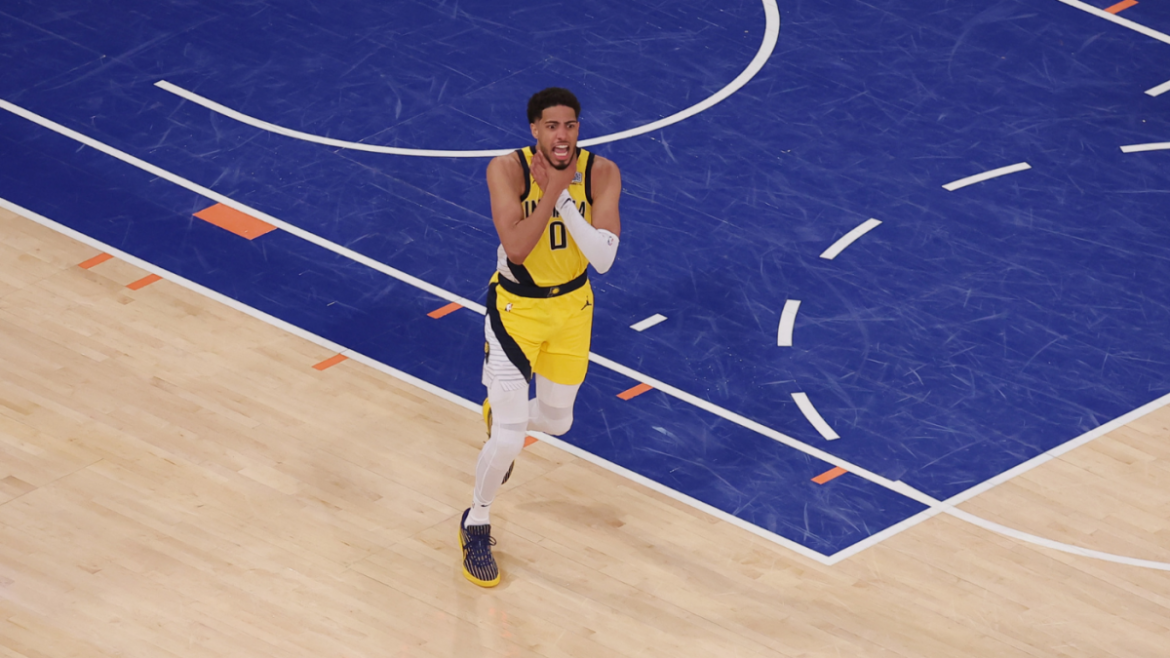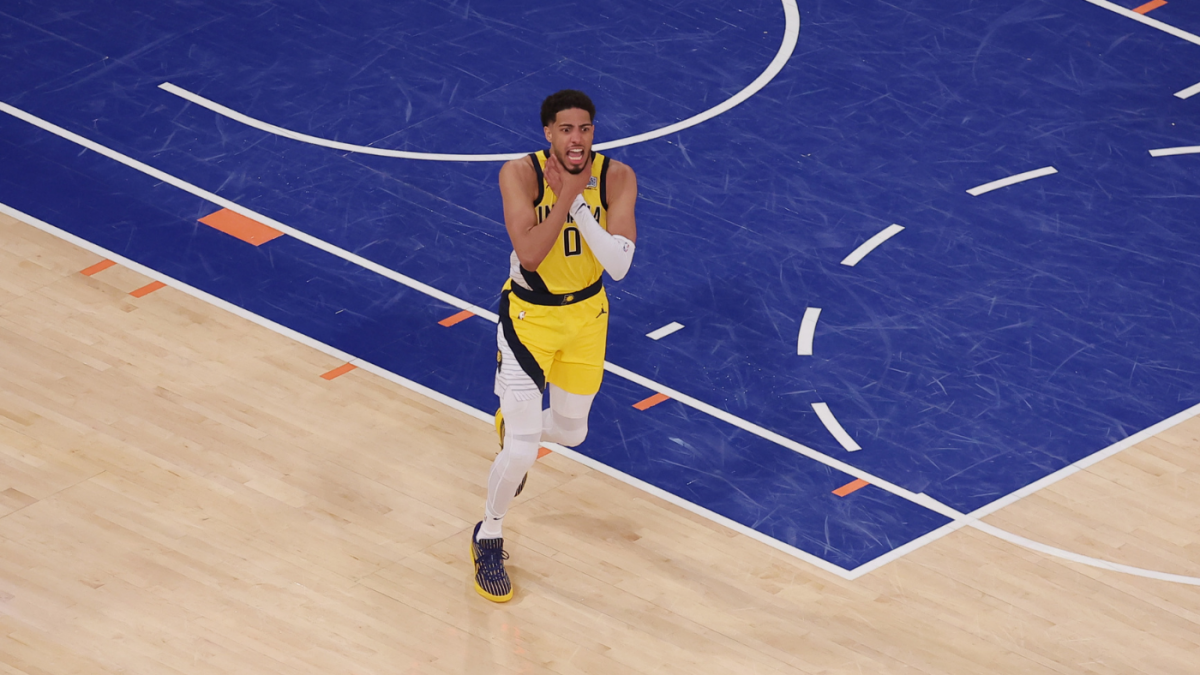The recent Eastern Conference Finals Game 1 between the Indiana Pacers and the New York Knicks was a thrilling spectacle marked by a historic comeback and unforgettable tension, chiefly highlighted by Pacers star Tyrese Haliburton’s buzzer-beater and symbolic gesture. This game not only rekindled a storied playoff rivalry but also echoed the legacy of one of the NBA’s most iconic moments involving Reggie Miller, establishing a narrative threading past and present with electric intensity.
Setting the Stage: A Classic Showdown Renewed
The Pacers-Knicks playoff rivalry, deeply etched in NBA history, once again came into sharp focus as Game 1 unfolded at Madison Square Garden. This matchup was more than just a battle for Eastern Conference supremacy—it was a canvas for epic moments that have defined both franchises over decades. As the game progressed, the Knicks held a substantial lead late into the fourth quarter, appearing poised to secure a Game 1 victory. However, the Pacers, emblematic of resilience, mounted a stunning rally.
Tyrese Haliburton’s Buzzer-Beater: A Moment for the Ages
With under three minutes remaining and Indiana trailing by a significant margin, Haliburton displayed exceptional composure, navigating intense defensive pressure. His pivotal jumper at the buzzer, with his toe just on the three-point line, bounced high off the rim and dropped in, tying the game and forcing an overtime period. This shot was not only a statistical highlight but also a psychological blow to the Knicks, embodying Indiana’s refusal to concede.
What elevated this moment was Haliburton’s immediate and unmistakable reaction—he recreated Reggie Miller’s infamous choke sign, a gesture that Miller originally directed at a rival Knicks fan nearly 30 years ago during the 1994 Eastern Conference Finals. Haliburton’s homage was not lost on the crowd or the commentators, especially with Miller himself on the call for TNT, adding layers of historical resonance and theatrical drama.
The Reggie Miller Choke Sign: Symbolism and Swagger
Reggie Miller’s choke sign became emblematic of his battles against the Knicks in the 1990s, particularly highlighting his psychological tactics and clutch performances. When Haliburton duplicated this gesture immediately after his buzzer-beating shot, it was a bold and playful jab at the Knicks and their fans, evoking memories of Miller’s greatest moments. Interestingly, Haliburton initially believed his shot had won the game outright, celebrating prematurely with the choke sign before realizing the game was to continue into overtime.
This act connects two eras: Miller’s dominance and trash talk in a rivalry defined by intensity and drama, and Haliburton’s current rise as a star with similar clutch abilities and confidence. Moreover, Haliburton’s fashion choice of donning a hoodie featuring Miller’s choke gesture during a postgame press conference further cemented this link, signaling his awareness of the legacy he is now part of and his role in carrying that fierce competitive spirit forward.
The Pacers’ Remarkable Comeback and Impact on the Series
Trailing by 14 points with less than three minutes left, the Pacers unleashed a furious 23-point surge in the waning moments of regulation—a record-setting run in NBA playoff history for a stretch that length. Haliburton’s shot symbolized this historic effort, shifting momentum and setting the tone for overtime, where Indiana ultimately secured a 138-135 victory.
This comeback victory was a statement, dispelling any notion that the Knicks had the series securely in hand. It amplified the narrative of the Pacers as a resilient team capable of clutch performances and inspired confidence in their ability to contend with top Eastern Conference teams.
Psychological Warfare and Legacy in Playoff Rivalries
The Plymouth rivalry between the Knicks and Pacers has long been punctuated by psychological mind games, with players like Reggie Miller famously getting under the skin of Knicks fans and players alike. Haliburton’s embrace of this tradition illustrates how legacy and rivalry continue to fuel competition at the highest levels. His playful taunts and confident actions reminded the Knicks—and their passionate fan base—that old wounds can be reopened and that the Pacers once again harbor a spirit that stings deep.
The “choke” theme was heard repeatedly in coverage and fan chatter, reflecting both on the Knicks’ collapse in this game and their historical struggles against clutch Pacers performances. Haliburton’s embrace of this narrative, even fashioning and wearing apparel commemorating Miller’s gesture, underscores how sports symbolism can sustain cultural meaning and psychological edge across decades.
Conclusion: A New Chapter in an Enduring Rivalry
Tyrese Haliburton’s buzzer-beating heroics and his symbolic recreation of Reggie Miller’s choke sign transcended a single game moment. It marked a resurgence of a contest steeped in history, a bold declaration of Indiana’s competitive identity, and the emergence of a new playoff star ready to etch his own legacy. The Pacers’ ability to rally from a deep deficit to claim victory in such dramatic fashion energized the series and intensified anticipation for the battles ahead.
This game was more than a scoreline; it was a statement—a reminder that in sports, history often reverberates with fresh echoes, and new legends rise while honoring those who came before. Haliburton, by channeling Miller so seamlessly, connects generations, blurs the lines between past and present, and reaffirms that playoff basketball is as much about psychology and showmanship as it is about scoring points. The 2025 Eastern Conference Finals just became a richer, more compelling saga because of moments like these.
—
Elevate your writing with expert clarity and creativity—discover how at Learn more





